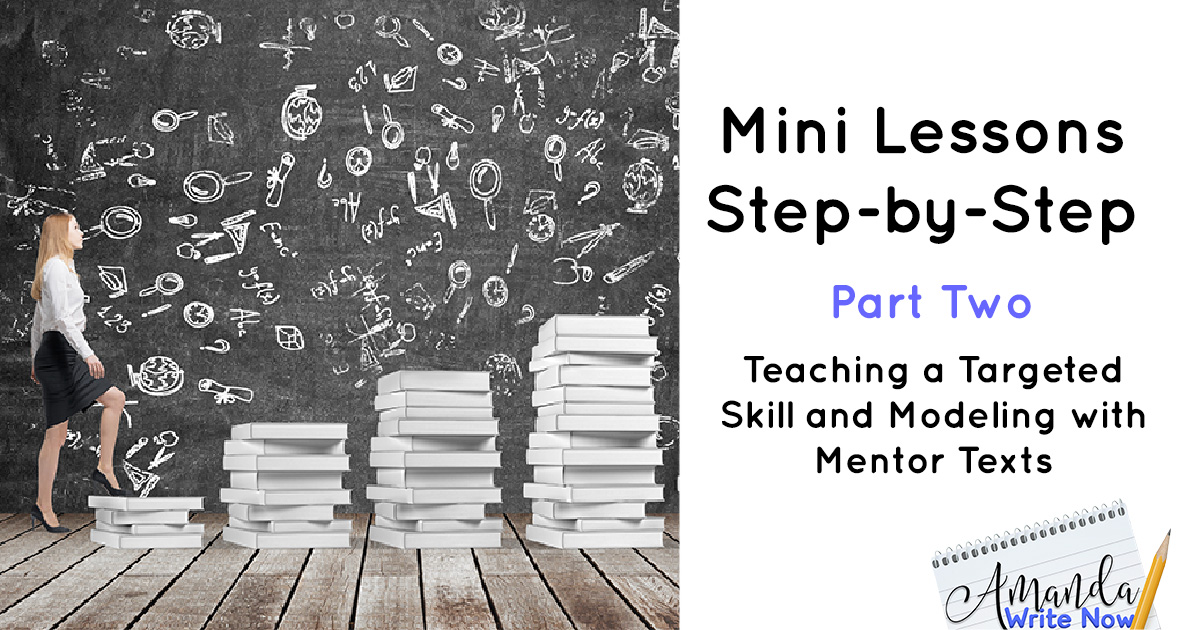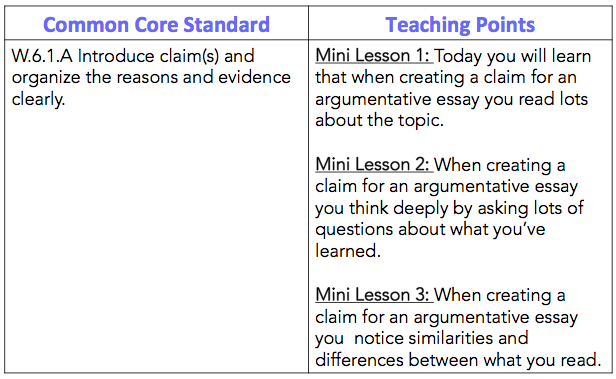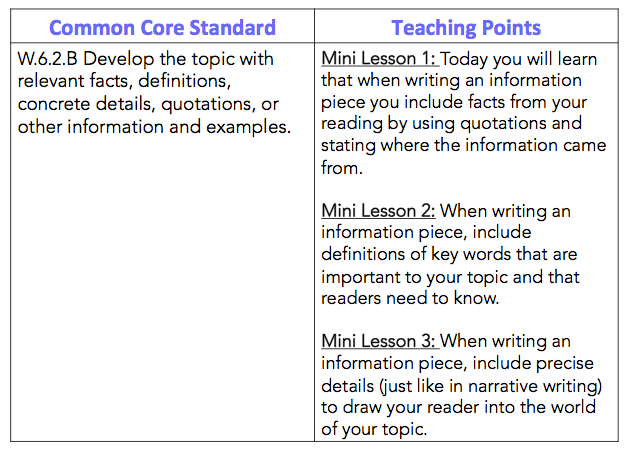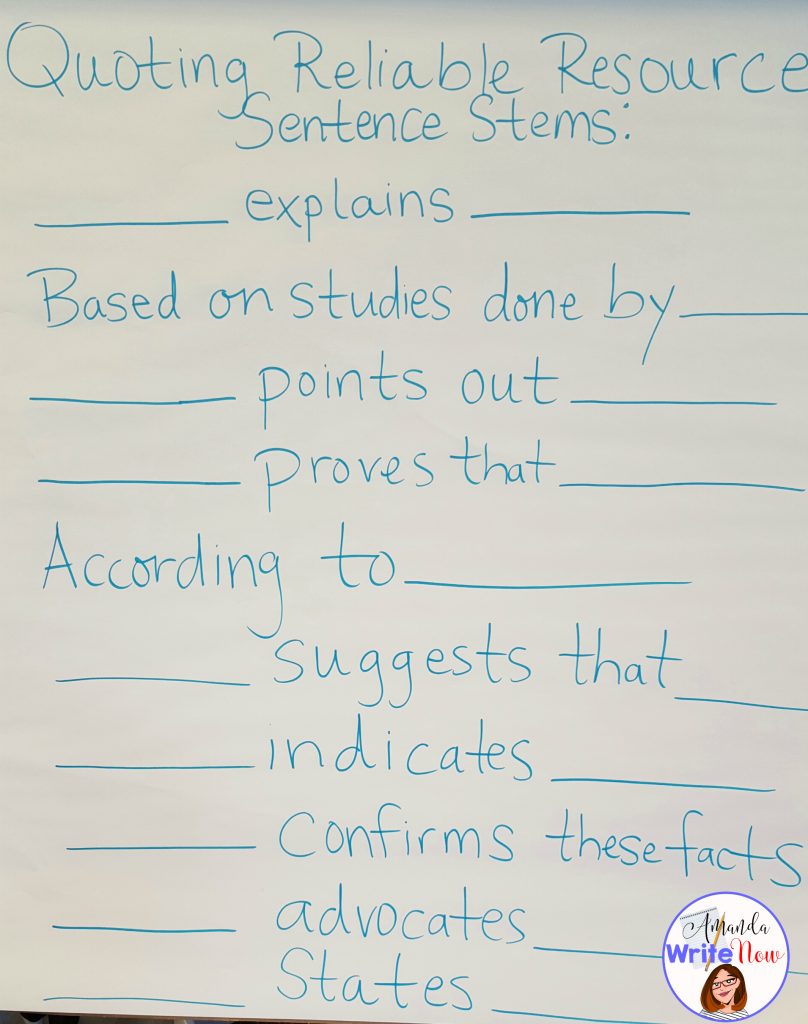Welcome to Mini Lessons Step By Step Part Two…

Part One: Coming to the Meeting Area & Hooking Students In
Part Two: Teaching a Targeted Skill & Modeling with Mentor Texts
Part Three: Guided & Independent Practice
Let’s get started with Mini Lessons Step By Step Part Two…
Deciding on a Teaching Point
Your teaching point should be simple, clear and include all the knowledge students will gain from the lesson.
This can be a challenging task when a teacher looks through the Common Core Standards. It can feel overwhelming!
So I will walk you through my process. Below you will find examples of Common Core Standards and how I transformed them into teaching points to be stated after the hook of the mini lesson discussed in Part One of this series. It is helpful to have your teaching point written down for students to see as well.
When writing your own teaching points here are some tips:
- Be consistent, always say, “Today you will learn…” or “My tip for the day is…” Being consistent clues your students into the fact that what you say next is the most important thing they should take away from the lesson.
- Include not only key words but the action students will take to practice the skill. What will they actually do?
- Try not to be too wordy, write as if you were a kid.
- Test the teaching point out on a kid! Ask a student to read it and tell you what they think it means.
- Write the teaching point down and have students write it, take a picture of it or read it out loud.
Okay, so now that you know what lesson to teach, how do you go about teaching it?!?!
Using Think Alouds
I do this all the time! I write in my own journal under a document camera, speaking to myself aloud to show what is going on in my mind during the writing process.
It is important to notify students that you are modeling your thinking, so any questions you ask during this process are not meant to be answered by students, they are rhetorical and meant to be answered only by you. I like to say, “Okay students be silent while you listen to what is going on in my mind, do not respond!” One of the reasons I love this method to teach writing skills is because writing is quite a lonely endeavor and students need to know that. You don’t improve without doing it, failing and continuing on!
Using Sentence Stems
Sentence stems are awesome because you can use them to model a skill and then students can use the same sentence to practice the skill.
When I used the sentence stems below I called students by name as doctors from various Universities studying topics. You could also name them off as journalists from various newspapers. Then I made up statistics when using the stems. I then had students do the same thing. They LOVED it. They were saying things like, “Based on studies done by Doctor Jones (a student, lol) at Havard University 75% of kids who play video games do better in math.” Afterward I showed students how to use the stems with real articles from real professors/journalists then they tried it. This was a hit with my students and they learned how to quote from reliable resources to prove their point in an essay!
Using Student Writing
Students love seeing their writing used to teach a lesson.
When sharing student writing it is important to use it in a positive way to demonstrate a writing technique you think others should try. I typically keep it anonymous. Many students want to know who the author is, it can become a guessing game and distract from learning. So you will want to discuss the expectations around this type of modeling. You could say something like…
“From time to time I may use your writing strategies to teach the class because I think what you are trying out is something everyone should try. When I do this it is very important to remember not to try to guess whose writing it is. It is the writer’s choice whether or not they want to announce that the writing is theirs. It is always the writer’s choice to publish and share and we must all respect that.”
Using Mentor Texts
Mentor texts are any published articles, stories, editorials or books within the genre of writing you are teaching that can support writers in their work within that genre. Read more about mentor texts here.
When you use a mentor text you should only read a short snippet that encompasses the skill you are teaching within the mini lesson. This means that you may need to read the mentor text in its entirety before choosing to use a snippet to model a skill. This is exactly why I always teach a reading workshop unit right before a writing workshop unit!
This is an AWESOME website with lots of mentor texts! Thoughtful Learning K12
Here are some of my favorite mentor texts to use with various genres of writing:
Narrative
Elementary
Come On Rain by Karen Hesse
Fireflies by Julie Brinckloe
My Rotten Red Headed Older Brother by Patricia Polacco
Secondary
Everything Will Be Okay by James Howe
Information
Elementary
Who Was? series
Who Would Win series
Animals Nobody Loves by Seymour Simon
Articles from Time for Kids.com like Financial Literacy for Kids
Secondary
The Way Things Work by Neil Ardley
Articles from Tween Tribune
Argumentative
Elementary
The True Story of the Three Little Pigs by Jon Scieszka
Can We Save the Tiger by Martin Jenkins
Secondary
New York Times Editorials (Written by Kids)
Thanks for reading! If you found this post helpful at all please feel free to share below or pin an image from the post.
Quick Recap
So far in this three part series delving into the mini lesson I’ve covered the management of the meeting area, getting students’ attention with a variety of hooks, deciding on targeted mini lesson skills to teach and various strategies to teach those skills. I hope you learned a ton while reading Mini Lessons Step By Step Part Two! Next up…Part Three: Guided & Independent Practice






0 Comments